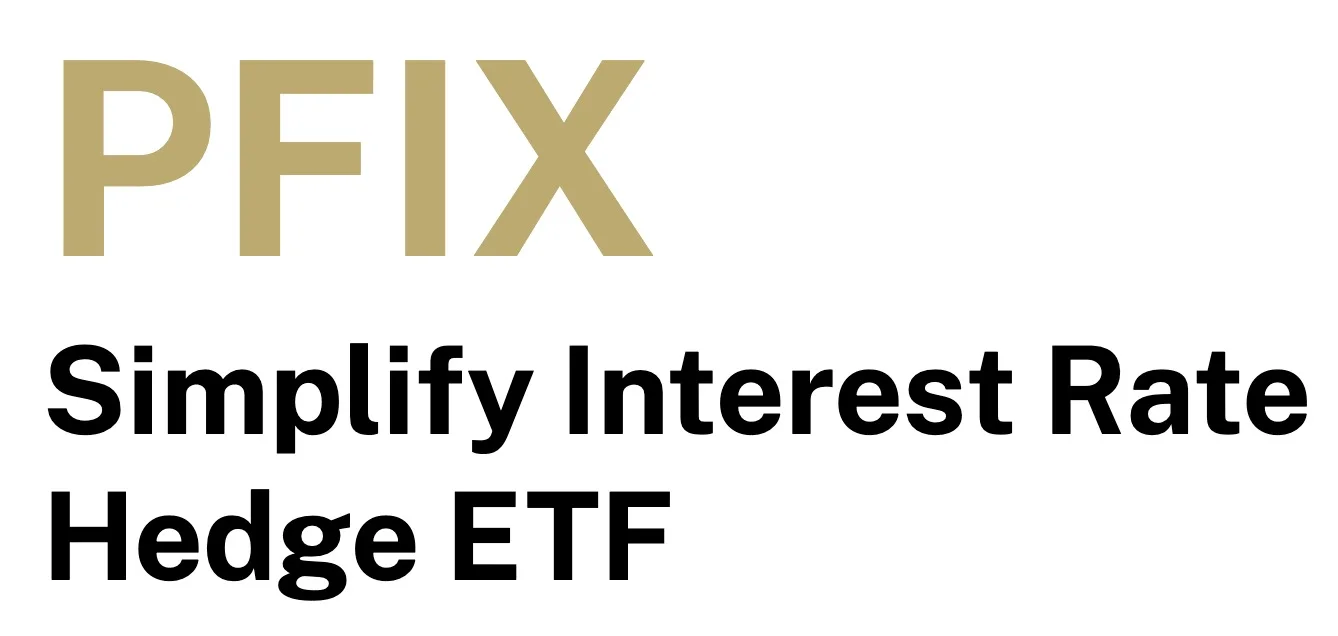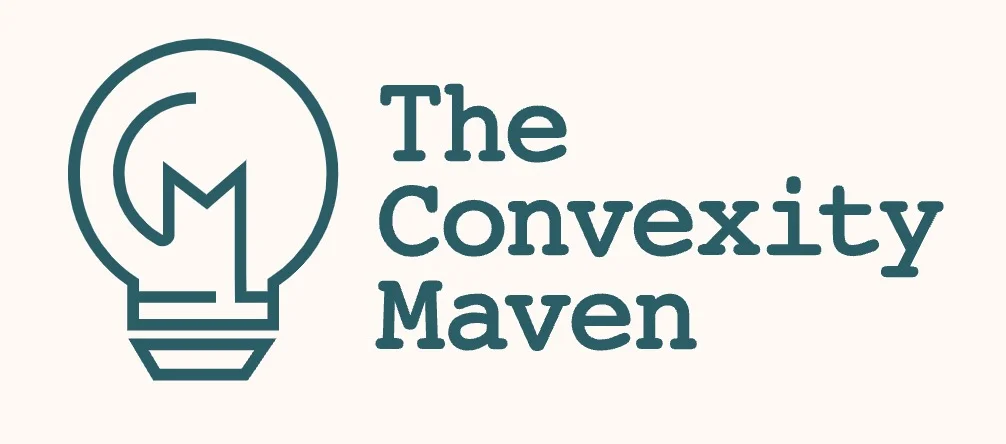I haven’t been shy in hiding the fact that Simplify ETFs is one of my favourite alternative fund providers.
They offer a vast array of puzzle pieces for curious investors to consider when it comes to building more efficient, robust and regime ready portfolios.
Hence, I’m thrilled they’re the first guests in what will be a new interview series on this investing blog.
Given the success of “Investing Legends” and “How I Invest” I wanted to create a third series that zeroes in on ETFs and Mutual Funds.
After discussing various funds on Twitter with passionate amateur investors and in-the-know advisors, there are certain features about funds that just can’t be thoroughly unpacked in a fund tear sheet or prospectus.
The aim of this series is to dig a bit deeper to understand the strategy behind the fund, how it may potentially fit into a portfolio at large and when it should perform at its best/worst.
Hence, I’ve decided to call the series “The Strategy Behind The Fund”
Today we’ll be zooming in on PFIX better known as Simplify Interest Rate Hedge ETF.
We’re fortunate enough to have the creator of the fund Harley Bassman (better known as @ConvexityMaven on Twitter) join us to discuss all things related to PFIX ETF.
Without further ado, let’s turn things over to Harley!

Review of Simplify Interest Rate Hedge ETF PFIX: Unpacking The Investing Strategy Behind The Fund with Harley Bassman

Hey guys! Here is the part where I mention I’m a travel content creator! This “The Strategy Behind The Fund” interview is entirely for entertainment purposes only. There could be considerable errors in the data I gathered. This is not financial advice. Do your own due diligence and research. Consult with a financial advisor.
source: Simplify Asset Management on YouTube
These asset allocation ideas and model portfolios presented herein are purely for entertainment purposes only. This is NOT investment advice. These models are hypothetical and are intended to provide general information about potential ways to organize a portfolio based on theoretical scenarios and assumptions. They do not take into account the investment objectives, financial situation/goals, risk tolerance and/or specific needs of any particular individual.

What’s The Strategy Of PFIX ETF?
For those who aren’t necessarily familiar with Simplify Interest Rate Hedge ETF (PFIX), let’s first define what it is and then explain this strategy in practice by giving some clear examples.
PFIX offers pure and positively convex exposure to rising interest rates (not inflation).
This ETF effectively owns a “put option” on the 30yr UST that expires in May 2028, struck at 4.25%; plus $30 of a short-maturity UST.
PFIX is NOT actively managed.

Unique Features Of Simplify Interest Rate Hedge ETF
Let’s go over all the unique features your fund offers so investors can better understand it.
What key exposure does it offer?
Is it static or dynamic in nature?
Is it active or passive?
Is it leveraged or not?
Is it a rules-based strategy or does it involve some discretionary inputs?
How about its fee structure?
PFIX is not actively managed; this offers the feature of being able to roughly profile its performance as interest rates change.
Its most valuable feature is the Convexity inherent in owning an option, the down side is limited while the upside has no bounds.

What Makes PFIX ETF Unique?
How does your fund set itself apart from other alternative funds being offered in what is already a crowded marketplace?
What makes it unique?
PFIX owns an active ISDA contract, this is the document needed to trade directly with Wall Street firms on an even footing with Goldman Sachs or Merrill Lynch.
PFIX is one of the rare ETFs that uses its ISDA to purchase long-dated options (one-year to ten-year in expiry) that are not available on any exchange or to non-professional (civilian) investors.

What Else Was Considered For PFIX ETF?
What’s something that you carefully considered adding to your fund that ultimately didn’t make it past the chopping board?
What made you decide not to include it?
Nothing.
PFIX owns only two assets (a long-dated option and a short-dated UST) that is (mostly) fixed in proportion.
There will (rarely) be some adjustments, such as when the option is less than five years in expiry, it will be rolled out to closer to a seven-year expiry.
However, this will not materially impact the performance of PFIX.

When Will PFIX ETF Perform At Its Best/Worst?
Let’s explore when your fund/strategy has performed at its best and worst historically or theoretically in backtests.
What types of market conditions or other scenarios are most favourable for this particular strategy?
On the other hand, when can investors expect this strategy to potentially struggle?
This was detailed in “Fire Insurance – Revisited”, February 1, 2022
By its nature, PFIX is driven by the “forward” interest rate, not the “spot” interest rate.
This is a tricky concept, but in a nutshell, the shape of the Yield Curve is important.
As the Yield Curve has inverted (short-term rates are higher than long-term rates), PFIX has underperformed.
This is because the Spot interest rate has risen faster than the Forward interest rate.
However, if the Yield Curve ever steepens (long-term rates rise above short-term rates), PFIX should significantly outperform expectations.
Away from that detail, PFIX is expected to closely move with long maturity interest rates, PFIX is expected to rise as rates rise, and decline as rates fall.

Why Should Investors Consider Simplify Interest Hedge ETF?
If we’re assuming that an industry standard portfolio for most investors is one aligned towards low cost beta exposure to global equities and bonds, why should investors consider your fund/strategy?
PFIX should be considered for portfolios that have significant (negative) exposure to rising interest rates.
It should be considered an “insurance policy” rather than a speculative asset, although one is welcome to use it for such since it is nearly a $400mm fund that trades in excess of 200,000 shares a day.

How Does PFIX ETF Integrate Into A Portfolio?
Let’s examine how your fund/strategy integrates into a portfolio at large.
Is it meant to be a total portfolio solution, core holding or satellite diversifier?
What are some best case usage scenarios ranging from high to low conviction allocations?
We have recommended allocating a 5% dollar exposure of PFIX to rate sensitive portfolios.
Specific to the “insurance” concept, one should not buy PFIX because they are bearish on interest rates, but because they are bullish and might be wrong.
PFIX is similar to automobile insurance, you buy it with the hope you will not be in an accident.
The “killer app” of PFIX is that it allows access to an ultra-long-dated option, that offers massive positive convexity with relatively little time decay (theta).
We have modelled PFIX to decay at about 6% per year.

Potential Cons of PFIX ETF
What’s the biggest point of constructive criticism you’ve received about your fund since it has launched?
That rates have not risen as fast as buyers had hoped.
Of course, we cannot fix that.

Potential Pros of PFIX ETF
On the other hand, what have others praised about your fund?
Everyone loves the pure exposure to a long-dated option, and that it is NOT managed, therefore the investor has total control of the timing and sizing.
Most other funds that (try to) offer such exposure are either softened by management, or are inefficient via poor construction.

What’s New & Exciting Over At Simplify ETFs?
We’ll finish things off with an open-ended question.
Is there anything that we haven’t covered yet that you’d like to mention about your fund/strategy?
If not, what are some other current projects that you’re working on that investors can follow in the coming weeks/months?
The key feature of PFIX is the access to an ISDA contract that allows civilians to purchase products usually only available to professionals.
We recently introduced two new ETFs – TUA and TYA, that offer an interesting return profile.
While in theory civilians can trade futures, the reality is that it is rather bothersome to open such an account, and many of the most well-regarded financial managers will not permit futures trading on their platform.
TYA is functionally similar, but offers about three time levered exposure to the 7yr UST.

Connect With Harley Bassman And Simplify ETFs
Harley’s Website: The Convexity Maven
Twitter: @ConvexityMaven / @SimplifyAsstMgt
YouTube: Simplify Asset Management
Simplify Asset Management: Simplify ETFs
Fund Page: PFIX ETF

Nomadic Samuel Final Thoughts
I want to personally thank Harley for taking the time to participate in the “Strategy Behind The Fund” series by contributing thoughtful answers to all of the questions!
Also, special thanks to Eric McArdle (@EMcArdleInvest) for helping to coordinate things behind the scenes!
If you’ve read this article and would like to have your fund featured, feel free to reach out to nomadicsamuel at gmail dot com.
That’s all I’ve got!
Ciao for now!
Important Information
Investment Disclaimer: The content provided here is for informational purposes only and does not constitute financial, investment, tax or professional advice. Investments carry risks and are not guaranteed; errors in data may occur. Past performance, including backtest results, does not guarantee future outcomes. Please note that indexes are benchmarks and not directly investable. All examples are purely hypothetical. Do your own due diligence. You should conduct your own research and consult a professional advisor before making investment decisions.
“Picture Perfect Portfolios” does not endorse or guarantee the accuracy of the information in this post and is not responsible for any financial losses or damages incurred from relying on this information. Investing involves the risk of loss and is not suitable for all investors. When it comes to capital efficiency, using leverage (or leveraged products) in investing amplifies both potential gains and losses, making it possible to lose more than your initial investment. It involves higher risk and costs, including possible margin calls and interest expenses, which can adversely affect your financial condition. The views and opinions expressed in this post are solely those of the author and do not necessarily reflect the official policy or position of anyone else. You can read my complete disclaimer here.





